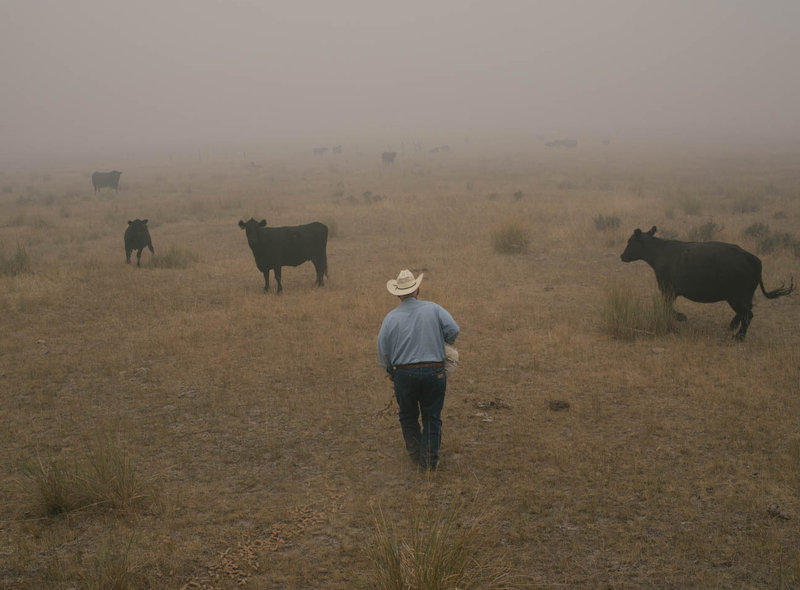
From “All Things Considered”
By Ian C. Bates for NPR
More than 1,000 square miles of wildfires are burning in Washington state. In the remote Okanogan Valley in the north-central part of the state, many cattle ranchers are scrambling to save their herds.
Ranchers in Omak, Wash., have lost animals, barns, pasture and winter haystacks to the wildfires. But some people still have their cattle, and at the town’s Ag Tech Feed Store, owners Monte and Laurie Andrews are trying to help keep those ranchers in business.
“We’re trying to make sure that these cattle are fed, that these ranch families don’t lose their livelihood — that we can keep them going,” says Monte Andrews.
The Andrews’ feed store is a hub for the community. Ranchers are using it as stopgap for broken communications. Power, phone lines and cell phone towers have burned down. The Andrews are helping people coordinate cattle evacuations.
People offload donated hay from a flatbed truck in the lot of the Tech Feed Store in Omak, Wash. The Andrews family’s store has been a hub for donations and communications for local ranchers during the Okanogan Complex fires.
Sometimes, it’s the quieter moments that let the stress sink in. Outside the feed store, Hugh Tower tends to his evacuated horse and mule. He built his own log cabin up in the Tunk Valley. Fire rings his property now, but there are still two older horses he couldn’t get in a trailer to haul out.
“What I can’t do is just sit still,” Tower says. “If I do that, I start to come apart,” he says, emotion straining his voice.
“I stay busy here,” he says. He tends to his animals outside the feed store and helps out inside. “There’s a lot to do here, you know — hay coming, in hay going out all the time.”
Across town at the Stockyard Café, ranchers are gathering every morning to trade information and guzzle coffee. Among them is Craig Vejraska. We jump in his new pickup. He has to go check on his cattle in some high mountain meadows. He’s nearly 70 years old, and he speeds at 70 mph up winding country roads — no seat belt. His eyes narrow to the road.
“I’ve had a better couple of weeks, I can tell you that,” he tells me.
We drive for nearly 15 miles over rugged dirt roads and flaming trees. “There ain’t no communications here, there ain’t no cell phone service, there’s nothing. You’re on your own,” Vejraska says.
In this scorched landscape of blackened trees, ash and thick smoke, finding black Angus cows is a problem. Vejraska has opened or cut all the fences on his property so cattle can escape. He would drive them to safety, but the fire is so widespread that he has few places to put them. He would have his four sons round them up, but that’s too dangerous.
Some of Vejraska’s black Angus cows emerge from the smoke. Spotting the animals is hard in this scorched landscape. Vejraska says he would drive the cattle to safety, but the fire is so widespread that he has few places to put them.And it’s too dangerous for his sons to round them up.
“They make cows every day,” he says. “I’m pretty partial to those four boys, and I’ll be ***damned if I’m going to give ’em up for a fire. You know, cows will have to burn.”
In a high meadow, he calls the cattle and opens up a sack of feed, pouring it on the ground. The animals drift in close, out of the smoke. He’s bred these cattle lines for years. They’re made for this harsh mountain ground.
This is a small band — just a few dozen cows out of his herd of 1,800. He smiles. At least these are still here.
“We’re still in business,” he says.
